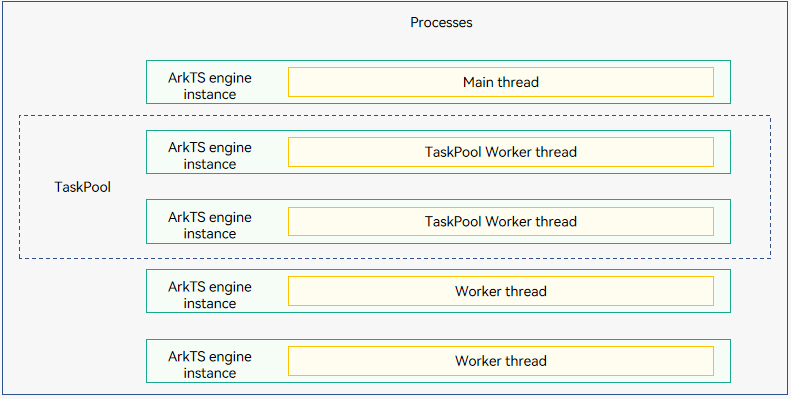Thread Model Overview (Stage Model)
There are three types of threads in the stage model:
-
Main thread
- Draws the UI.
- Manages the ArkTS engine instance of the main thread so that multiple UIAbility components can run on it.
- Manages ArkTS engine instances of other threads, for example, using TaskPool to create or cancel tasks, and starting and terminating Worker threads.
- Distributes interaction events.
- Processes application code callbacks (event processing and lifecycle management).
- Receives messages sent by the TaskPool and Worker threads.
-
Used for time-consuming operations and provides APIs for setting the scheduling priority and load balancing. It is recommended.
-
Used for time-consuming operations and supports inter-thread communication. For details about the operation mechanism, communication method, and usage of TaskPool and Worker, see Comparison Between TaskPool and Worker.

NOTE
- TaskPool manages the number of threads that can be created and their lifecycle. A maximum of eight Worker threads can be created, and you need to manage their lifecycle.
- Multiple components can exist in the same thread. For example, both UIAbility and UI components exist in the main thread. In the stage model, EventHub is used for data communication.
- To view thread information about an application process, run the hdc shell command to enter the shell CLI of the device, and then run the ps -p <pid> -T command, where <pid> indicates the process ID of the application.